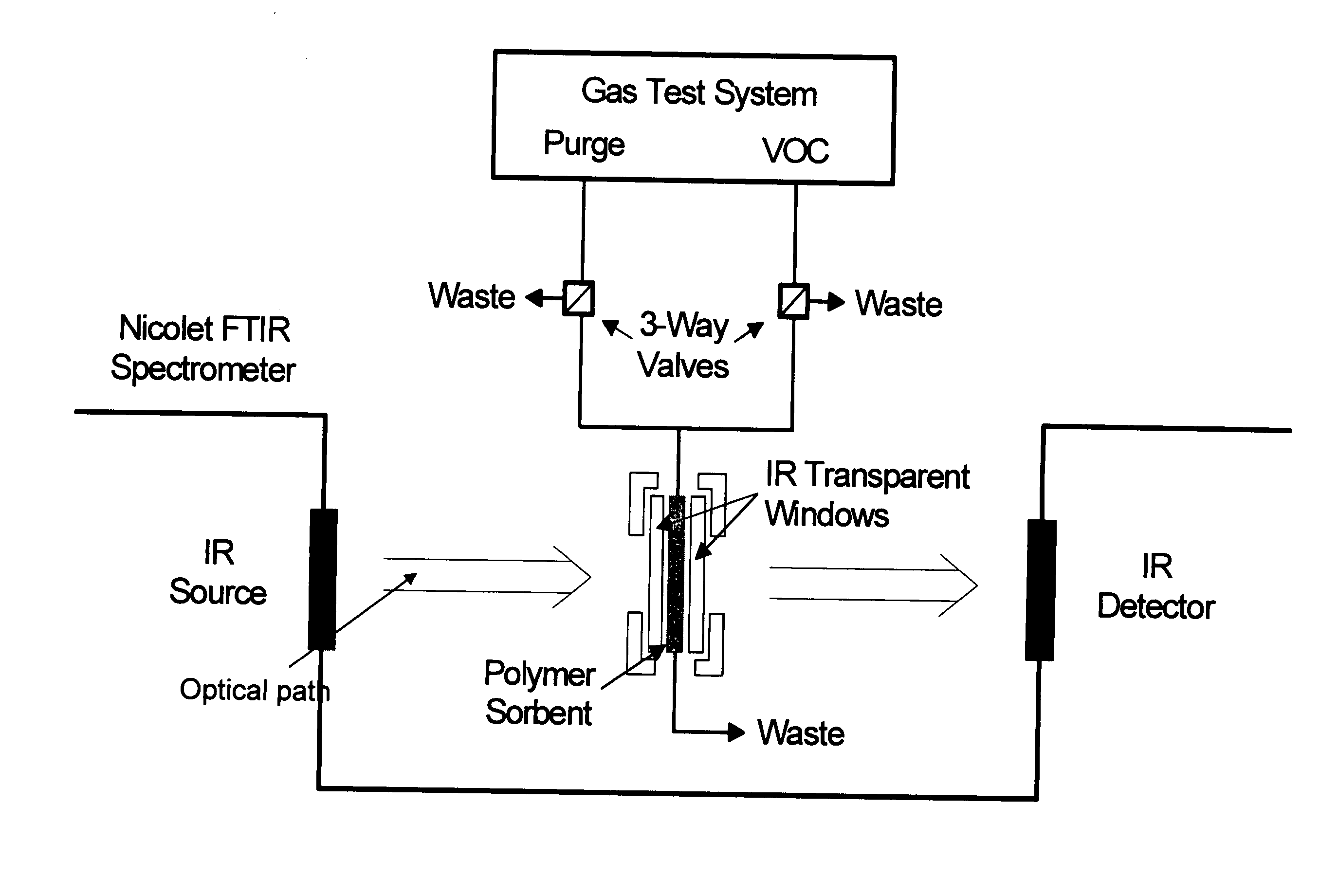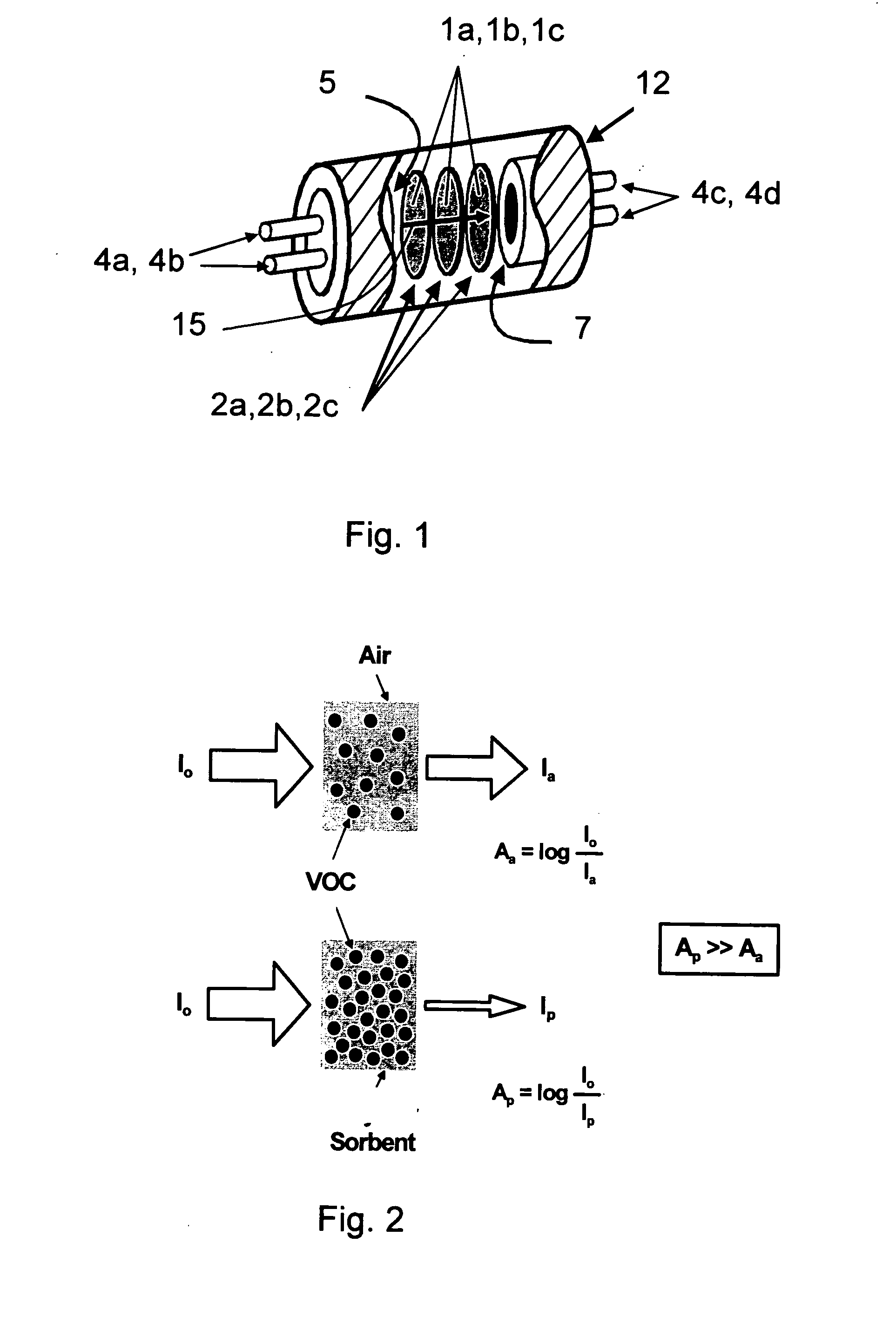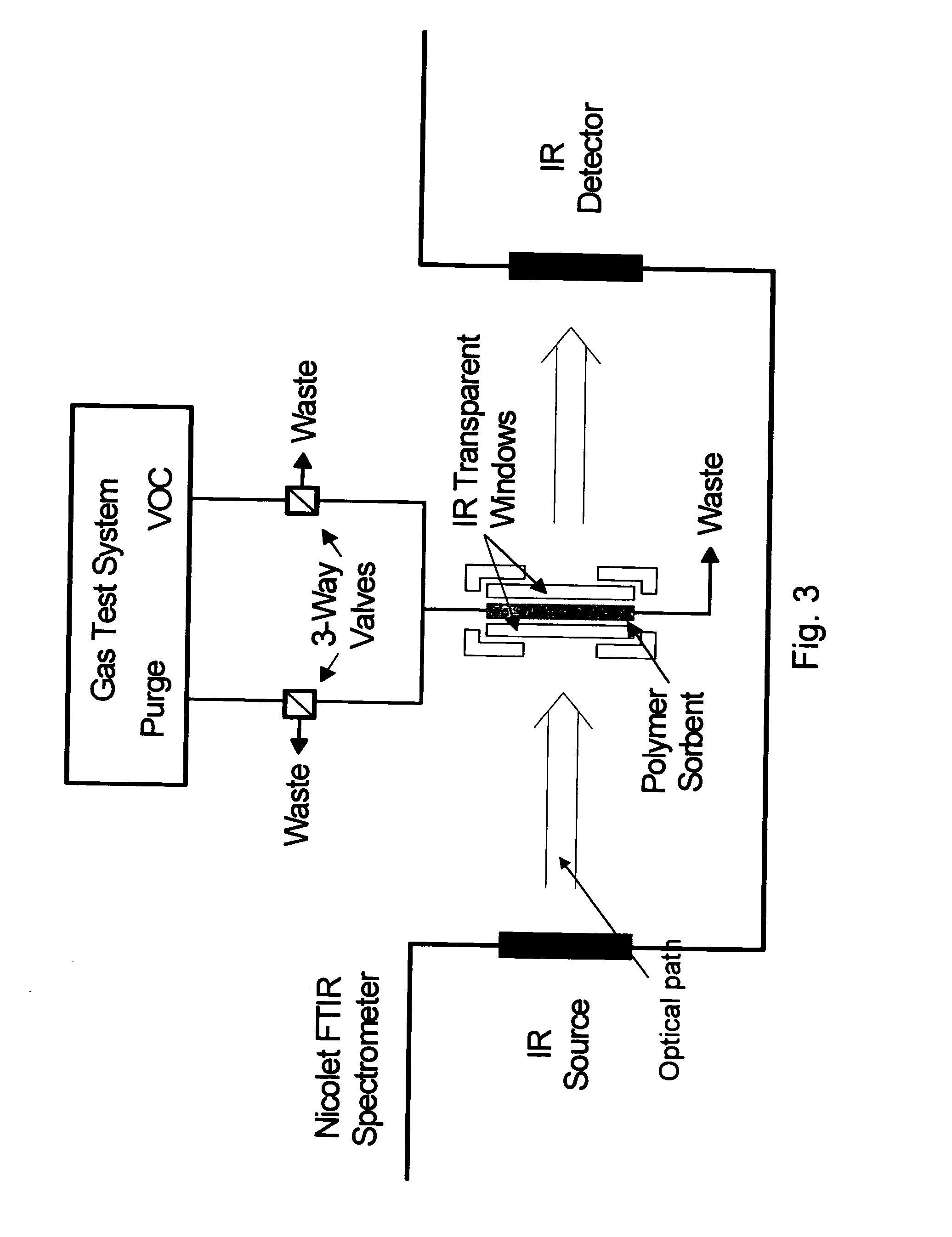Infrared sensor
a sensor and infrared technology, applied in the field of infrared sensors, can solve the problems of poor selectivity of these sensors, decreased sensor performance, lack of specific analyte selectivity, etc., and achieve the effect of minimizing the probability of false alarms and more accurate detection
- Summary
- Abstract
- Description
- Claims
- Application Information
AI Technical Summary
Benefits of technology
Problems solved by technology
Method used
Image
Examples
example 1
Polymer Thin-Film IR Sensors
Materials
[0113] Unless otherwise noted, all chemicals were purchased from Aldrich. A formulation of a fluorinated epoxy (FE), which was designed to enhance the response of organophosphorus-based CWAs, was synthesized as described below from commercially available materials. Diglycidyl ether of bisphenol F (DGEBF) was reacted with the diol α,α,α′,α′-tetrakis(trifluoromethyl)-1,4-benzenedimethanol in refluxing 1-butanol, in the presence of a catalytic amount of tributylamine and varying mole percentages of a reactive diluent (styrene oxide) to reduce the crosslinking density of the product for improved properties. Use of from about 25 to about 55 mole percent of styrene oxide afforded soluble, processable materials.
[0114] A formulation of poly-vinylchloride-co-vinylacetate-co-vinylalcohol (PVCAA) (from Aldrich Chemicals) and diethylene glycol adipate (DEGA) from Ohio Valley Specialty Chemicals was used to enhance the permeability of ERCs employing nitro...
example 2
Metal Oxide Sorbent IR Sensors
Film Preparation:
[0126] To prepare a film, a metal oxide was suspended in alcohol. For example, a suspension of 0.1 g TiO2 (anatase, Alfa Aesar, 99.9%) in 2 mL isopropanol was prepared. The suspension was sonicated for 5 minutes to ensure a through dispersion of the metal oxide (e.g., TiO2) in the solvent. A portion of the suspension was collected with a pipette, applied to the surface of an IR transparent substrate (a KBr disc), and allowed to evaporate. The thickness of this film was determined to be 25 μm based on a cross section examined by scanning electron microscopy (SEM) although various thicknesses can be achieved (0.1-100 microns) by varying the concentration of metal oxide in the suspension or altering the deposition method. A 0.025 g TiO2 in 2 mL isopropanol suspension was used to form a ca. 6 micron thick sorbent layer to detect 100 ppb DMMP. FIG. 10 shows IR absorbance (the P—O stretch) of DMMP adsorbed into the anatase TiO2 film contac...
PUM
 Login to View More
Login to View More Abstract
Description
Claims
Application Information
 Login to View More
Login to View More - R&D
- Intellectual Property
- Life Sciences
- Materials
- Tech Scout
- Unparalleled Data Quality
- Higher Quality Content
- 60% Fewer Hallucinations
Browse by: Latest US Patents, China's latest patents, Technical Efficacy Thesaurus, Application Domain, Technology Topic, Popular Technical Reports.
© 2025 PatSnap. All rights reserved.Legal|Privacy policy|Modern Slavery Act Transparency Statement|Sitemap|About US| Contact US: help@patsnap.com



